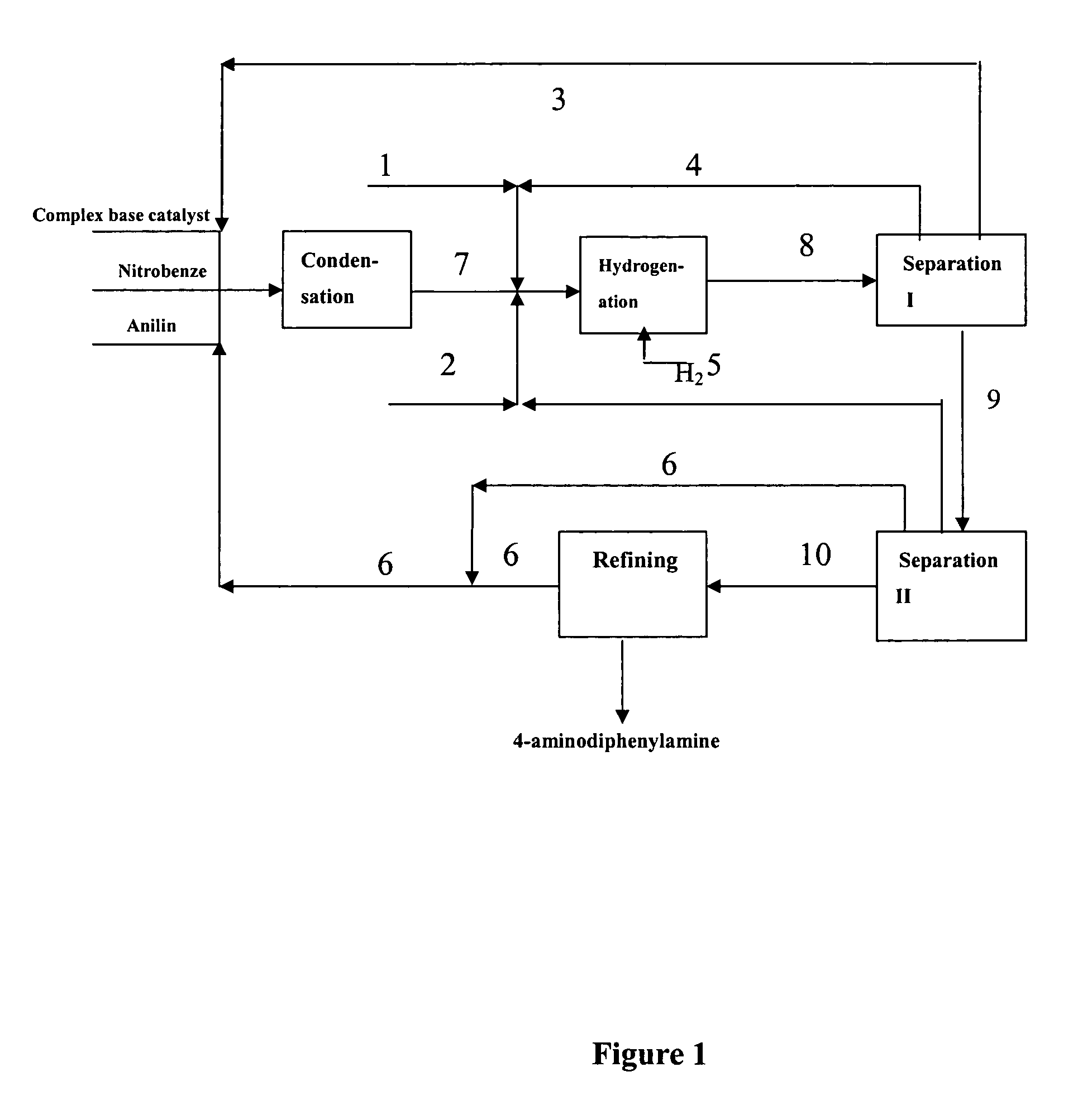Process for preparing 4-aminodiphenylamine
- Summary
- Abstract
- Description
- Claims
- Application Information
AI Technical Summary
Benefits of technology
Problems solved by technology
Method used
Image
Examples
example 1
Preparation of a Complex Base Catalyst
[0081] To a 1000 ml three-necked flask equipped with a condenser and a stirrer were added 227.5 g of 20 wt.-% aqueous solution of tetramethyl ammonium hydroxide (0.5 mol), log (0.25 mol) of sodium hydroxide and 346 g of 30 wt.-% aqueous solution of tetramethyl ammonium carbonate (0.5 mol). The mixture was homogeneously stirred at 72-77° C. to give a complex base catalyst having a concentration of 27.3 wt.-%.
example 2
Preparation of a Powdery Composite Catalyst
[0082] 46 g of powdery nickel, 51 g of powdery aluminum, and 3 g of powdery iron were taken and mixed, then molten into alloy state in an induction furnace. The molten alloy was ejected using gas pressure through a nozzle to a copper drum rotating at high speed to be quenched quickly with cooling speed being as high as 105-106 K / sec. The cooled alloy was pulverized using a ball mill, and 99.7 g of powder of from 40 to 300 mesh were obtained by sieving. 375 g of 20 wt.-% sodium hydroxide aqueous solution was charged into a 500 ml three-necked flask equipped with a thermometer and a stirrer, and the above powder is slowly added thereto. The mixture was stirred at 60° C. for 4 h, then the solid was washed with deionized water until neutral to give a powdery composite catalyst.
example 3
[0083] Under vacuum condition, feeding pumps of the above complex base catalyst, aniline and nitrobenzene were simultaneously switched on and adjusted to such flow rate as aniline 150 kg / h, nitrobenzene 30 kg / h and the complex base catalyst 200 kg / h. The aniline, nitrobenzene and complex base catalyst were continuously fed into a falling film reactor to be heated and allowed to condense. Condensation liquid in the falling film reactor was discharged from the bottom into a first reactor to proceed with condensing. Part of condensation liquid from the bottom of the first reactor was conveyed back to the falling film reactor via a circulating pump, forming a local circulating system. Ethanol vapor at 78-90° C. was used as the heat medium of the falling film reactor. Reaction temperature was controlled as 75° C., pressure was controlled as 0.008 MPa (absolute pressure) and flow rate of the circulating liquid was controlled as 1 m3 / h. The reactants overflowed from the first reactor into ...
PUM
| Property | Measurement | Unit |
|---|---|---|
| Temperature | aaaaa | aaaaa |
| Temperature | aaaaa | aaaaa |
| Temperature | aaaaa | aaaaa |
Abstract
Description
Claims
Application Information
 Login to View More
Login to View More - R&D
- Intellectual Property
- Life Sciences
- Materials
- Tech Scout
- Unparalleled Data Quality
- Higher Quality Content
- 60% Fewer Hallucinations
Browse by: Latest US Patents, China's latest patents, Technical Efficacy Thesaurus, Application Domain, Technology Topic, Popular Technical Reports.
© 2025 PatSnap. All rights reserved.Legal|Privacy policy|Modern Slavery Act Transparency Statement|Sitemap|About US| Contact US: help@patsnap.com



